Reflections on Teen International Adventure Program to Rwanda
This post was written by Zoo Crew members: Julia Godinich, Jacob Lutz, Gabby Richards, Josh Mazari, André Fadulu, Juliet Nguyen, and Olivia Mejia
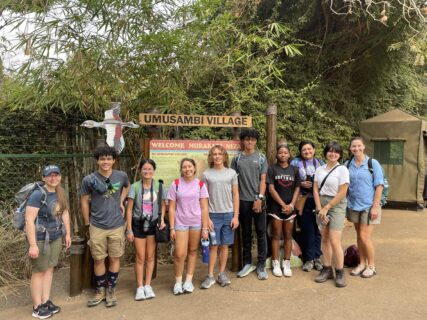 The Houston Zoo Teen International Adventure Program to Rwanda was a life-changing experience that gave us a new perspective on community-based conservation. In Rwanda, much of the community greatly supports the conservation efforts in their country with the support of Houston Zoo. This experience has inspired us to take initiative about conservation movements we are passionate about. The legacies of people who have worked in Rwanda in present and in the past, such as Dr. Olivier Nsengimana and Dian Fossey, have left a lasting impact on communities, the environment, and us.
The Houston Zoo Teen International Adventure Program to Rwanda was a life-changing experience that gave us a new perspective on community-based conservation. In Rwanda, much of the community greatly supports the conservation efforts in their country with the support of Houston Zoo. This experience has inspired us to take initiative about conservation movements we are passionate about. The legacies of people who have worked in Rwanda in present and in the past, such as Dr. Olivier Nsengimana and Dian Fossey, have left a lasting impact on communities, the environment, and us.
We started this journey by visiting the Rwanda Wildlife Conservation Association (RWCA) team at Umusambi Village in the capital city of Kigali. They helped us learn about the important roles all animals play in their respective ecosystems. We learned some very important skills such as learning how to set up acoustic monitoring traps, camera traps, and mist nets (which is a way to safely capture bats and birds). On this trip, we were inspired by all the hard working and passionate people we met, especially Dr. Olivier, the founder of RWCA, who dedicated his career to helping the grey crowned cranes and other overlooked species in Rwanda. We worked together with local teens to participate in a scavenger hunt around the village. In doing so, we learned about each other’s cultures and ways of life. In the tree nursery at Umusambi, we learned the perfect ratio of dirt to compost to sand (6:3:1) while helping prepare native saplings.
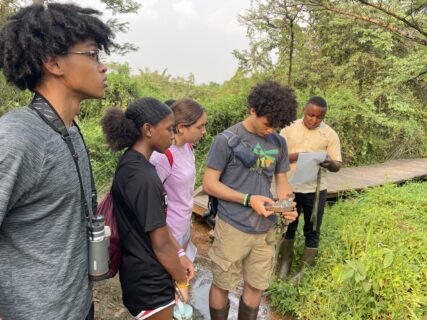
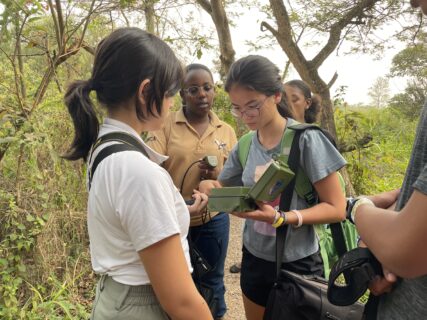
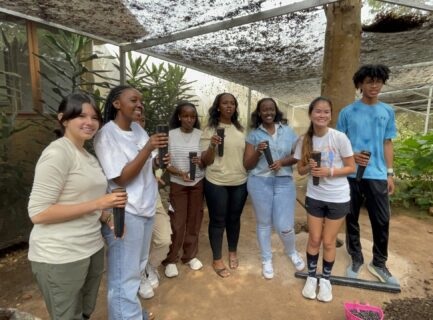 Then, we continued with the RWCA team and traveled north to Rugezi Marsh. When we arrived, we settled into our glamping tents and then were given a magical boat tour of the marsh. We observed some beautiful birds such as the malachite kingfisher, pink-backed pelican, hamerkop, and grey crowned crane.
Then, we continued with the RWCA team and traveled north to Rugezi Marsh. When we arrived, we settled into our glamping tents and then were given a magical boat tour of the marsh. We observed some beautiful birds such as the malachite kingfisher, pink-backed pelican, hamerkop, and grey crowned crane.
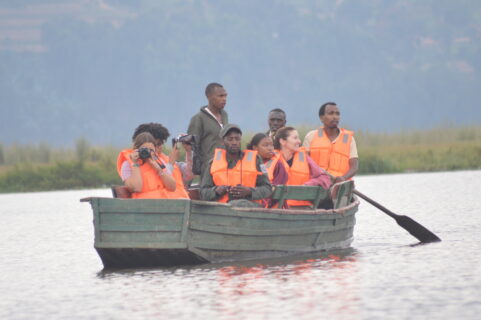
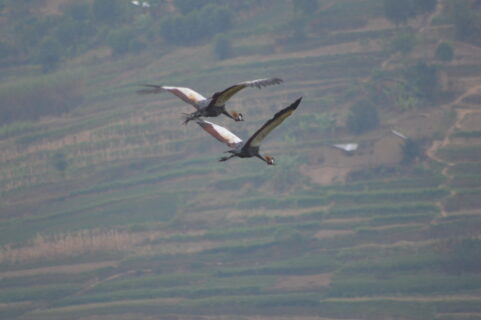
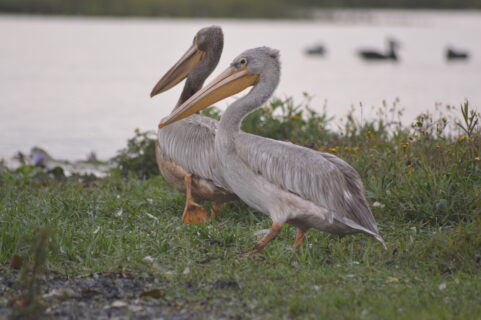
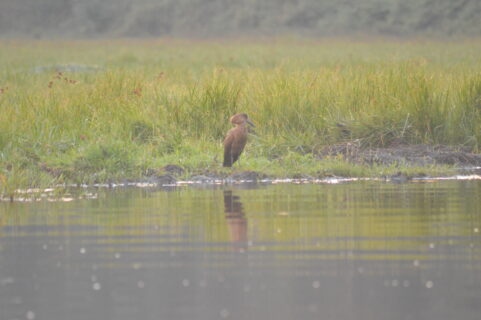 The next day we broke up into small groups to do a grey crowned crane census hiking through the agricultural fields and marsh and following different flocks. Later that day, we regrouped, shared all the data we collected, and talked about our favorite parts of the day! We concluded the day by looking at a map of the marsh marked with all the cranes sighted. Gathering this data not only helps RWCA understand what is happening to crane populations but also helps them understand what types of habitats the cranes are using most often.
The next day we broke up into small groups to do a grey crowned crane census hiking through the agricultural fields and marsh and following different flocks. Later that day, we regrouped, shared all the data we collected, and talked about our favorite parts of the day! We concluded the day by looking at a map of the marsh marked with all the cranes sighted. Gathering this data not only helps RWCA understand what is happening to crane populations but also helps them understand what types of habitats the cranes are using most often.
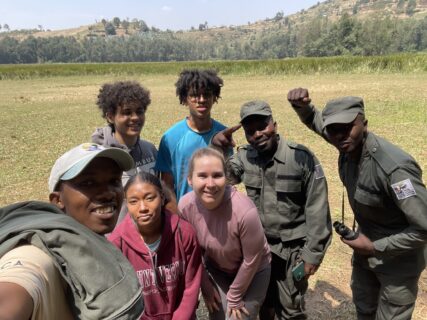
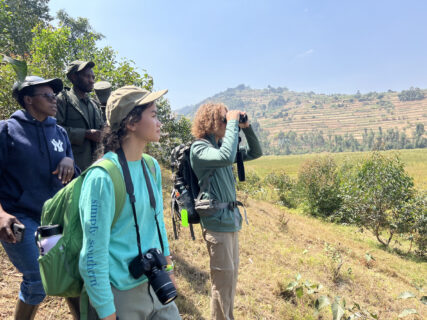 After our time at Rugezi Marsh, we journeyed into the misty mountains to the Dian Fossey Gorilla Fund. Our first day with them, we went birdwatching on the Ellen DeGeneres Campus and participated in the monitoring of local birds by contributing to Dian Fossey’s bird database. We visited the Cindy Broder Conservation Gallery and had a fun time learning about mountain gorillas and the work of the Dian Fossey Gorilla Fund.
After our time at Rugezi Marsh, we journeyed into the misty mountains to the Dian Fossey Gorilla Fund. Our first day with them, we went birdwatching on the Ellen DeGeneres Campus and participated in the monitoring of local birds by contributing to Dian Fossey’s bird database. We visited the Cindy Broder Conservation Gallery and had a fun time learning about mountain gorillas and the work of the Dian Fossey Gorilla Fund.
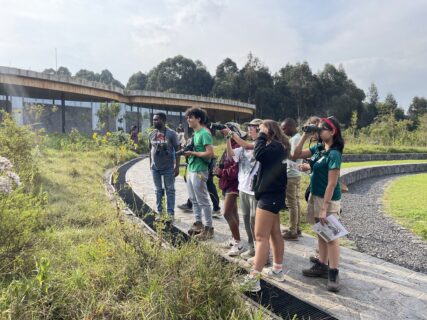 We then helped Conservation Heritage-Turambe (CHT) and one of their local schools by planting bamboo by the river Cyuve. Together we planted over 70 new seedlings by the river. After having lunch with the incredible director of CHT, Valerie, she took us to tour one of the schools that she works with. We also went to their headquarters and met an artist and conservation educator named Eric who uses art as a way to inspire conservation action. Eric paints beautiful murals around the community that helps community members see native animals they may never have the chance to see in the wild.
We then helped Conservation Heritage-Turambe (CHT) and one of their local schools by planting bamboo by the river Cyuve. Together we planted over 70 new seedlings by the river. After having lunch with the incredible director of CHT, Valerie, she took us to tour one of the schools that she works with. We also went to their headquarters and met an artist and conservation educator named Eric who uses art as a way to inspire conservation action. Eric paints beautiful murals around the community that helps community members see native animals they may never have the chance to see in the wild.
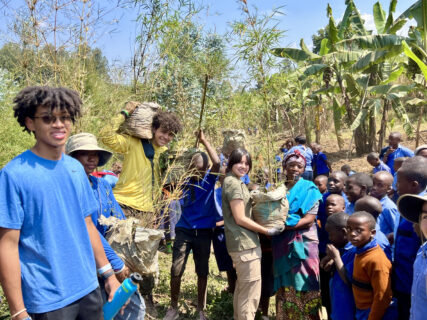
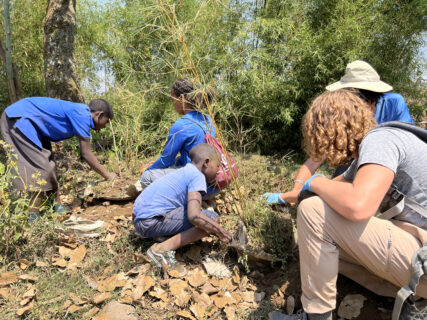 The next day we set off early in the morning to go on the Golden Monkey trek. Within the first 5 minutes we spotted a troop of 18 monkeys snacking in the potato fields with even more joining later on. Seeing these golden monkeys in the agricultural fields gave us a glimpse into how humans and wildlife coexist in Rwanda.
The next day we set off early in the morning to go on the Golden Monkey trek. Within the first 5 minutes we spotted a troop of 18 monkeys snacking in the potato fields with even more joining later on. Seeing these golden monkeys in the agricultural fields gave us a glimpse into how humans and wildlife coexist in Rwanda.
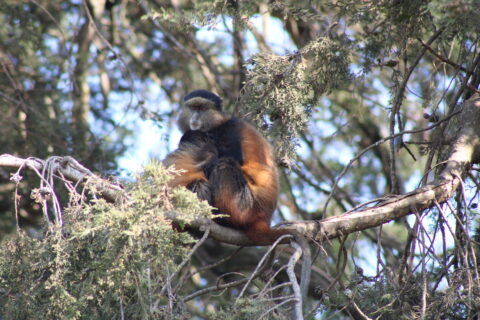 During our final days in Rwanda, we went to the Gorilla Doctors headquarters to meet with their team. They debriefed us on the gorilla trek and what they do in the field. We learned how the Gorilla Doctors perform health checks on each individual gorilla, observing them for signs of injury or illness, specifically looking for signs of respiratory infections as that is the leading cause of death in mountain gorillas. Drs. Adrien and Gaspard walked us through how they collect and record their data and explained how we would be helping them perform the health checks.
During our final days in Rwanda, we went to the Gorilla Doctors headquarters to meet with their team. They debriefed us on the gorilla trek and what they do in the field. We learned how the Gorilla Doctors perform health checks on each individual gorilla, observing them for signs of injury or illness, specifically looking for signs of respiratory infections as that is the leading cause of death in mountain gorillas. Drs. Adrien and Gaspard walked us through how they collect and record their data and explained how we would be helping them perform the health checks.
The next day we split into two groups and took us with porters and trackers into Volcanoes National Park. After hiking 1-2 hours through thick vegetation we found the groups we were tracking- Pablo’s group and Igisha’s group. Pablo’s group historically was the largest ever recorded with a total of 65 gorillas at its largest. Pablo’s group has since split up into smaller groups and now has 20 members. Igisha’s group is now the largest with 36 members. Amongst the two groups we saw a total of 20 gorillas. Each gorilla we carefully observed and recorded any abnormalities. Luckily most of the gorillas we saw looked very healthy. But, we learned, it’s still important for the Gorilla Doctors to do these health checks so if there are any signs of illness or injury they can treat them quickly. It was incredible to see how the Gorilla Doctors, park rangers, and trackers all work together to find all the gorillas. And it was so inspiring to meet and learn from these veterinarians who have helped save the mountain gorillas.
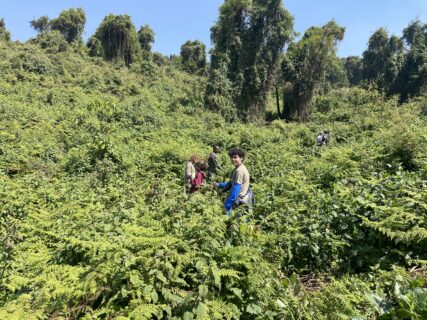
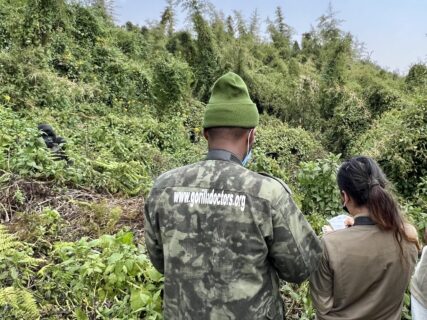
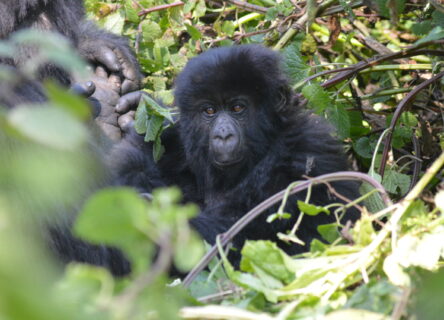
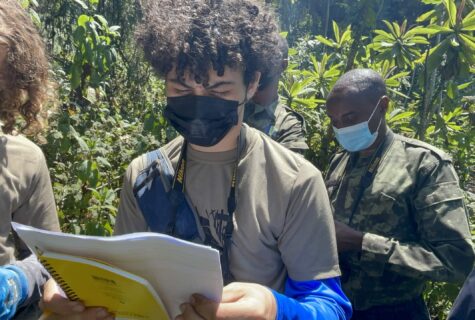 Everyone we met on our journeys through Rwanda was so inspirational. Participating in this trip has made us realize the importance of community involvement in wildlife conservation movements. We are so appreciative of how welcoming each of our partners were and are grateful for all that they taught us. Thank you to Dr. Olivier and the RWCA team for the fun and educational activities at Umusambi Village and for allowing us to participate in the grey crowned crane census at Rugezi Marsh. Thank you to Valerie and the team at Conservation Heritage-Turambe and the school group we got to meet and plant bamboo with. Thank you to Elias, Gad and everyone at Dian Fossey Gorilla Fund for your hospitality and for teaching us about Rwandan birds. And thank you to everyone at Gorilla Doctors giving us the opportunity to see your work first-hand.
Everyone we met on our journeys through Rwanda was so inspirational. Participating in this trip has made us realize the importance of community involvement in wildlife conservation movements. We are so appreciative of how welcoming each of our partners were and are grateful for all that they taught us. Thank you to Dr. Olivier and the RWCA team for the fun and educational activities at Umusambi Village and for allowing us to participate in the grey crowned crane census at Rugezi Marsh. Thank you to Valerie and the team at Conservation Heritage-Turambe and the school group we got to meet and plant bamboo with. Thank you to Elias, Gad and everyone at Dian Fossey Gorilla Fund for your hospitality and for teaching us about Rwandan birds. And thank you to everyone at Gorilla Doctors giving us the opportunity to see your work first-hand.
Now that the new Birds of the World exhibit is open, we look forward to sharing our stories about the grey crowned cranes and the wildlife-saving work of RWCA at the Birds of Africa aviary. We also can’t wait to talk about our experiences with our gorilla-saving partners in Rwanda at the Houston Zoo’s gorilla exhibit. Come find us the next time you’re at the Zoo!
